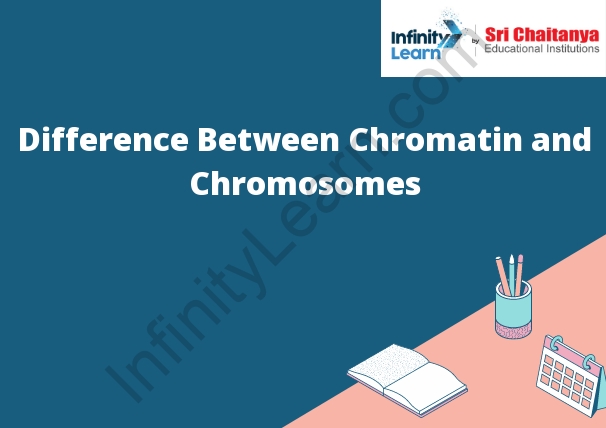Table of Contents
Difference Between Chromatin and Chromosomes
Chromatin is a complex of macromolecules that make up the chromosomes. Chromatin is made up of DNA, histones and other proteins. Chromosomes are formed when the chromatin condenses. The DNA is wrapped around the histones, forming a nucleosome. The nucleosomes are then stacked on top of each other, forming a chromosome.

Chromatin
is a complex of DNA and proteins that make up chromosomes. It is found in the nucleus of cells. The DNA is wound around histones, proteins that help organize the DNA. This complex is called chromatin.
Chromosome
A chromosome is a structure found in the nucleus of cells and is made up of DNA. Chromosomes carry the genetic information of an organism.
Difference Between Chromatin Fiber and Chromosome
Chromatin fiber is the name given to the structure of DNA when it is not condensed into chromosomes. Chromatin fibers are very long and thin and contain many DNA strands. Chromosomes are formed when the DNA in chromatin fibers is condensed by proteins called histones. The histones attach to the DNA strands and fold them around themselves, forming a compact structure.
Structure and Formation of Chromatin and Chromosomes
Chromatin is the name given to the DNA-protein complex that makes up the chromosomes. The DNA is wound around small proteins called histones to form a tight ball. This complex is called chromatin.
During cell division, the chromatin is uncoiled and the DNA is duplicated. The two copies of DNA are then attached to each other to form a chromosome.
Chromatin vs. Chromosome (Structure)
Chromatin is a complex of DNA and proteins that makes up chromosomes. The DNA is wrapped around proteins called histones, forming a structure called a nucleosome. The nucleosomes are then wound together into a fiber, and the fibers are twisted together to form a chromosome.
Structure of Chromatin
DNA is tightly wound around proteins called histones to form chromatin. The structure of chromatin varies depending on the cell’s stage of development and activity. Chromatin is very tightly packed in the nucleus of inactive cells. Chromatin is less tightly packed and more accessible in the nucleus of active cells.
Structure of Chromosomes
A chromosome is a long, thin, coiled molecule of DNA. Chromosomes are found in the nucleus of cells.
The DNA in chromosomes is arranged in a specific way. The DNA is divided into small pieces called genes. Genes are arranged in specific order along the chromosome.
Chromatin vs. Chromosome (Metabolism)
Chromatin is a complex of DNA and proteins that forms chromosomes. Chromatin is present in the nucleus of all eukaryotic cells. Chromatin is condensed during interphase and it becomes less condensed during mitosis. Chromosomes are the result of the condensation of chromatin.
Metabolic Activities in Chromatin
The following are some metabolic activities that occur in chromatin:
1. Enzymes that modify DNA and histones can alter the structure and function of chromatin.
2. Chromatin can be remodeled by enzymes that can add or remove DNA and histones.
3. Chromatin can be modified by proteins that bind to DNA and histones, and these modifications can affect gene expression.
Metabolic Activities in Chromosomes
Cellular metabolism is the set of chemical reactions that occur in a cell to maintain life. This includes the synthesis of macromolecules from simple precursors, the breakdown of these macromolecules for energy and the maintenance of ion balance. The chromosomes within the cell nucleus contain the genetic instructions for all of these activities.
The metabolic reactions that occur within the chromosomes are essential for the normal functioning of the cell. For example, the synthesis of DNA and RNA requires the correct sequence of nucleotides, which are the basic building blocks of these molecules. The correct sequence is encoded in the genes, which are located on the chromosomes.
The metabolic reactions that occur within the chromosomes can also be used to diagnose genetic disorders. For example, a mutation in a gene that codes for a critical enzyme can lead to a deficiency in the enzyme. This can disrupt the normal metabolic activities of the cell and cause a genetic disorder.
Chromatin Vs. Chromosome (Presence)
Chromatin is the combination of DNA and proteins that make up chromosomes. Chromatin is present when chromosomes are not visible under a microscope. Chromosomes are present when chromosomes are visible under a microscope.
Presence of Chromatin
The presence of chromatin is a major factor in the determination of cell type. In general, cells with a high level of chromatin are differentiated, while cells with a low level of chromatin are undifferentiated.
Presence of Chromosomes
The presence of chromosomes is essential for the survival of a species. Chromosomes contain the genetic information necessary for the reproduction and survival of a species.
Fun Fact: How are Chromosomes and Chromatin Related to Each Other?
Chromatin is the combination of DNA and proteins that make up chromosomes.
Similarities Between Chromatin and Chromosome
There are some similarities between chromatin and chromosome. Chromatin is a complex of proteins and DNA that makes up chromosomes. Chromatin is found in the nucleus of cells. Chromatin forms when DNA is wrapped around proteins called histones. The structure of chromatin is important for controlling the activity of genes. Chromatin can be modified to control gene activity. Chromatin can be condensed into chromosomes. Chromatin can be decomposed into DNA and histones.









